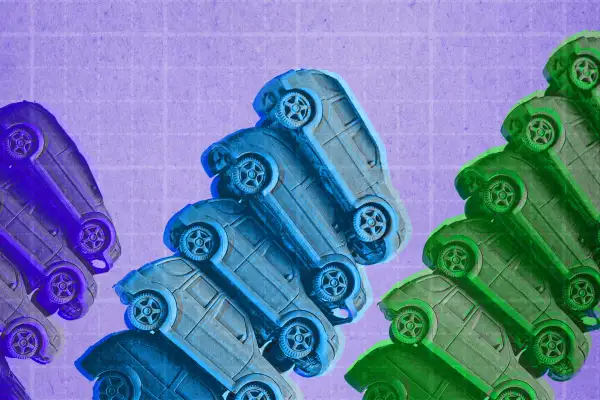New Car Prices Rose $6,000 More Than Expected in Recent Years

New car prices usually rise by about 3% with each new model year, but the average list price has jumped far more than expected over the past five years.
The net result is that car prices are $6,000 higher today than they would have been if costs climbed at their typical rate.
In July, the average list price of a new vehicle was $49,302, which is actually 1.9% lower than the average a year ago, according to Cars Commerce, the parent company of Cars.com.
Going back five years, however, car prices have skyrocketed — and the minor relief that’s come in the past year pales in comparison.
“If the average new-car price had continued on its typical 3% annual growth rate from 2019, today’s average new car price would be $43,000,” Rebecca Lindland, senior director of industry data and insights, said in a report.
That means car buyers have to come up with an extra $6,000 to afford a new ride, and buyers are financing those larger purchases at higher auto loan rates.
Is the new car market improving?
Over the past year, it's become more of a buyer's market for cars. There are more than 2 million vehicles available, which is closer to the pre-pandemic level, and shopping demand is down 26% year-over-year.
Finding low-priced new cars is still a major challenge, however. While the inventory of new vehicles has increased 45.1% year-over-year, Lindland observes that supply levels are rising the most for mid-priced and high-priced vehicles, and there remains a shortage of cars under $30,000.
“Even as inventory improves, consumers face higher costs for vehicles once considered relatively affordable,” Lindland said. “The gap between consumer expectations and market reality has widened, making it increasingly difficult for many buyers to find new cars within their budget.”
In July 2019, 1.1 million new vehicles were listed under $30,000 on the Cars.com marketplace. As of last month, that inventory was down to only 14.7% of the market, or 333,000 units.
“To get prices back on track, the industry would need to add more than 750,000 sub-$30,000 vehicles to the market, the same number of under $30k vehicles lost since 2019,” Lindland said.
The good news is that a separate analysis from Kelley Blue Book highlights several signs suggesting new car prices will come down in the coming months.
The average incentive for a new car purchase increased to $3,383 in July, which is the highest level in more than three years. “We’ve also seen some dealerships offering additional discounts to move 2024 models as the influx of 2025 models begins,” Kelley Blue Book reports.
For those with good credit who can be flexible with their vehicle search, the end of summer and beginning of fall will be a good time to look for deals.
More from Money:
Gas Prices Are Down Nearly 40 Cents in a Year — and They Could Keep Falling
Average Car Insurance Prices Expected to Hit $2,500 This Year

